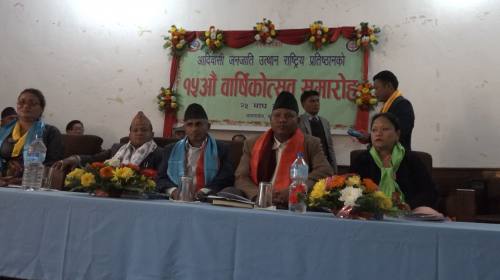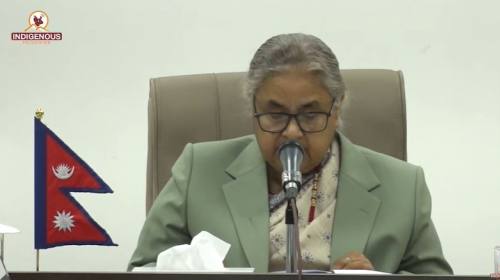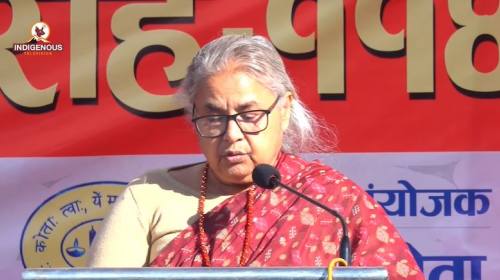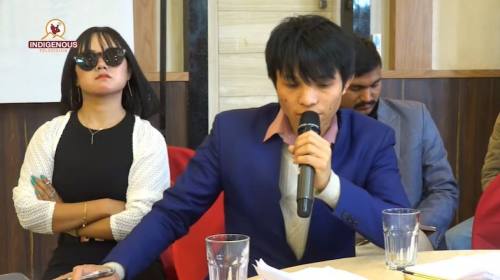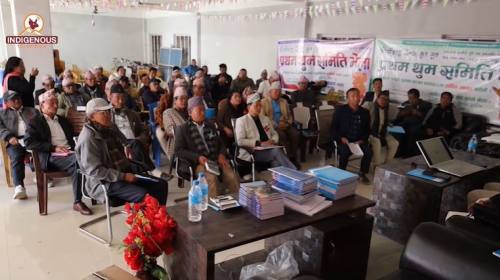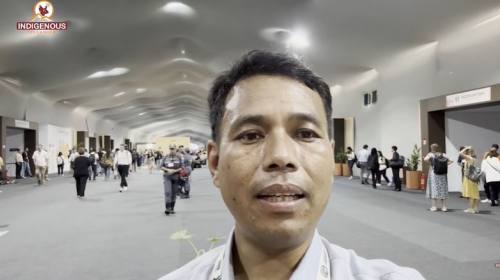Role of National Foundation for Development of Indigenous Nationalities (NFDIN) in changing context Episode - 25
3171 Views | March 12, 2017This episodes of 'Indigenous Voice' Television Program brought the discussion on the role of National Foundation for Development of Indigenous Nationalities (NFDIN), a government body responsible for the upliftment of Indigenous Nationalities. As many as 59 (previously 61) indigenous communities have been officially and legally recognized by the Nepal government under the National Foundation for Development of Indigenous Nationalities (NFDIN) Act-2002.
But after the new constitution incorporated the provision of a new Commission for Indigenous Peoples, the Ministry of Federal Affairs and Local Developmentm, the line Ministry has been telling that the Foundation will be replaced by a new commission. Therefore there has been fate of NFDIN and its role has been very important to bring into a larger discussion. NFDIN is a government body, which has been supporting Indigenous Peoples' organizations for the development of their respective communities.
Who are Indigenous Peoples of Nepal?
Indigenous Peoples of Nepal are officially described as Indigenous Nationalities (Adivasi Janajati). They make up for 35.81 per cent of the country's total population (approximately 8.5 million out of the 26 million Nepalese). But, Indigenous People's Organizations claim that their population could be as high as 50 percent of the country's population. Despite constituting such a significant portion of the population, indigenous peoples have been marginalized in terms of language, culture and political as well economic opportunities throughout the history.
As per the 2001 census, Nepal has 125 castes and ethnic groups speaking as many as 123 languages. And 90 percent of these languages are spoken by Indigenous Peoples.
Indigenous Peoples in Nepal have distinct cultures, languages and belief systems. They live across the country – the mountains, the hills and the plains. They are in majority in as many as 27 of the total 75 districts. Most of indigenous people live in remote and rural areas and make a living out of subsistence farming.
Nepal is a rich country in terms of language, culture, religion, biodiversity and socio-cultural diversity. As many as 59 (previously 61) indigenous communities have been officially and legally recognized by the Nepal government under the National Foundation for Development of Indigenous Nationalities (NFDIN) Act-2002. However, in 2010, a high-level taskforce recommended an additional 22 ethnic and caste groups to be recognized as Indigenous Nationalities under the purview of the NFDIN Act. But, the government did not make any decision about that taskforce's recommendations. Instead, it recently formed a new taskforce for the same purpose.
Some of Nepal's indigenous peoples like Rautes are nomads while some are forest dwellers like Chepang and Bankariya. Most of them rely on agriculture. Only a few indigenous peoples are advanced and better off. However, in terms of ethnic identity, language, religion and culture, all advanced, not-so-advanced and backward indigenous peoples have fallen victims to discrimination at the hands of the dominant groups.
The 2007 Interim Constitution of Nepal promotes cultural diversity and talks about enhancing skills, knowledge and rights of indigenous peoples. But, the indigenous peoples in Nepal are waiting to see how these visions will be realized by the new constitution, which is still in the process of being promulgated through the second Constituent Assembly.
Definition of Indigenous Peoples of Nepal
The NFDIN Act-2002 defines indigenous nationalities (Adivasi Janajati) as distinct communities having their own mother tongues, traditional cultures, written and unwritten histories, traditional homeland and geographical areas, plus egalitarian social structures.
The act further says that each indigenous nationalities or Janajati has the following characteristics:
A distinct collective identity,
Own language, religion, tradition, culture and civilization,
Own traditional egalitarian social structure,
Traditional homeland or geographical area,
Written or oral history,
Having ´We´ feeling,
Has had no decisive role in the politics and government of modern Nepal,
Who are the indigenous or native peoples of Nepal, and
Who declares itself as ´Janajati´.
Prior to the NFDIN Act, Nepal Federation of Indigenous Nationalities (NEFIN), in consultation with indigenous scholars and leaders of Nepal and abroad, concluded that though "Indigenous peoples" and nationalities are not synonymous with each other but all the "nationalities" seem to be the "indigenous peoples" in the context of Nepal'. The consultative meeting defined "indigenous peoples" or "indigenous nationalities" to refer to those communities
1)which possess their own distinct tradition and original lingual and cultural traditions and whose religious faith is based on ancient animism (worshiper of ancestors, land, season, nature), or who do not claim "The Hinduism" enforced by the state, as their traditional and original religion.
2)those existing descendants of the peoples whose ancestors had established themselves as the first settlers or principal inhabitants the present territory of Nepal at the time when persons of different culture or ethnic origin arrived there and who have their own history (written or oral) and historical continuity.
3)which communities have been displaced from their own land for the last 4 centuries, particularly during the expansion and establishment of modern Hindu nation State and have been deprived of their traditional rights to own the natural resources (Kipat (communal land), cultivable land, water, minerals, trading points etc.).
4) who have been subjugated in the State's political power set-up (decision-making process), whose ancient culture, language and religion are non-dominant and social values neglected and humiliated;
5)whose society is traditionally erected on the principle of equality – rather than the hierarchic of the Indo-Aryan caste system and gender equality or rather women enjoying more advantaged positions) – rather than social, economic and religious subordination of woman, but whose social norms and values have been slighted by the state;
6)which formally or informally admit or claim to be "the indigenous peoples of Nepal" on the basis of aforementioned characteristics.
In 1996, the government formed Task Force which identified a total 61 different ethnic groups as indigenous nationalities of Nepal. But the draft bill for the establishment of National Foundation for the Development of Indigenous Nationalities (NFDIN), which was approved by the parliament in 2002, listed 59 indigenous nationalities.
The taskforce defined Indigenous Peoples on the basis of the following characteristics:
those who have their own ethnic language other than Nepali;
those who have their own distinct traditional customs other than those of the ruling high castes;
those who espouse distinct culture other than Hindu culture of the dominant groups;
those who have distinct social structure that does not fall under hierarchical varna or caste system;
those who have written or oral history that trace their line of decent back to the period before their territories were annexed into present Nepal;
those who are included in the list of adavasi/janajati as officially gazetted by the Government of Nepal.
Indigenous Peoples (Indigenous Nationalities) of Nepal
|
1. |
Mountain (18) |
1. Bara Gaunle 7. Lhomi (Shingsawa) 13. Thakali 2. Bhutia 8. Lhopa 14. Thudam 3. Byansi 9. Marphali Thakali 15. Tingaunle Thakali 4. Chhairotan 10. Mugali 16. Topkegola 5. Dolpo 11. Siyar 17. Sherpa 6. Larke 12. Tangbe 18. Wallung
|
|
2 |
HILL (24)
|
1. Bankaria 9. Hayu 17. Newar 2. Baramo 10. Hyolmo 18. Pahari 3. Bhujel/Gharti 11. Jirel 19. Rai 4. Chepang 12. Kushbadia 20. Sunuwar 5. Chhantyal 13. Kusunda 21. Surel 6. Dura 14. Lepcha 22. Tamang 7. Fri 15. Limbu 23. Thami 8. Gurung 16. Magar 24. Yakkha |
|
3. |
INNER TARAI (7) |
1. Bote 4. Kumal 7. Raute 2. Danuwar 5. Majhi 3. Darai 6. Raji
|
|
4. |
TERAI (10) |
1. Dhanuk 6. Meche 2. Dhimal 7. Rajbanshi (Koch) 3. Gangai 8. Satar 4. Jhangad 9. Tajpuria 5. Kisan Santhal 10. Tharu |
|
Source: Nepal Rajpatra (Nepal Gazette), February 7, 2002 |
||
